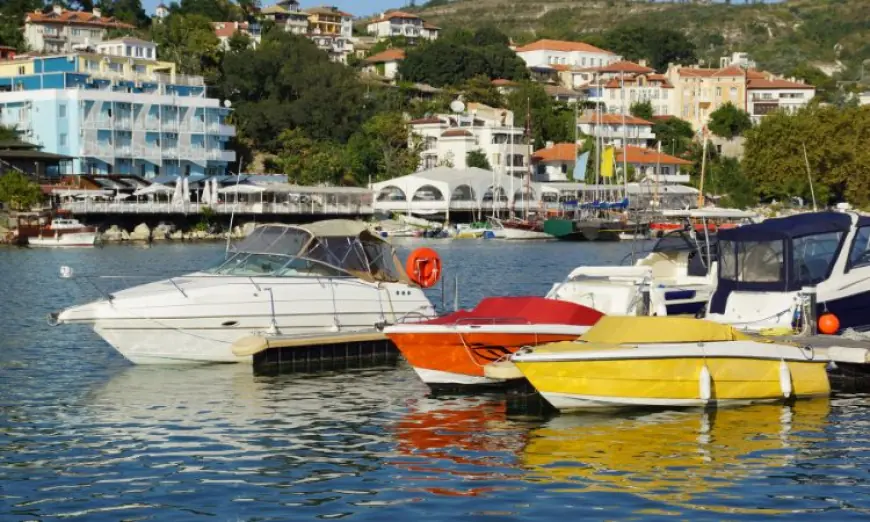Global Boat Rental Market Analysis and Forecast 2025–2034

The global boat rental market size reached a value of about USD 20.10 billion in 2024. The industry is further expected to grow at a CAGR of about 5.3% in the forecast period of 2025-2034 to reach a value of around USD 31.89 billion by 2034. This growth is driven by increasing interest in recreational water activities, luxury travel, and eco-friendly boating solutions. The market's expansion is further fueled by technological advancements and rising disposable incomes, enabling more consumers to explore marine tourism and leisure boating experiences.
Market Overview
The boat rental market is gaining traction worldwide as consumers prioritize unique travel experiences and outdoor activities. The shift toward experiential tourism and luxury charters is reshaping the industry. Companies are also focusing on sustainable practices, introducing electric and hybrid boats to address environmental concerns. This growing demand for eco-friendly options, coupled with flexible rental models, is expected to sustain market growth over the coming years.
Market Segmentation
By Propulsion
Sail Boats: Popular among eco-conscious travelers, sailboats offer a serene and sustainable boating experience, making them ideal for leisure and adventure trips.
Electric Boats: These boats are gaining popularity due to their zero-emission operations and low maintenance costs. They align with the global push for sustainability and are particularly attractive in regions with strict environmental regulations.
Fuel-powered Boats: Dominating the market, fuel-powered boats are preferred for their high-speed capabilities and suitability for long-distance travel, particularly in commercial and recreational segments.
Others: Hybrid propulsion systems are emerging as a balanced solution, combining fuel efficiency with reduced environmental impact.
By Boat Length
Up to 28 Feet: These boats are well-suited for personal use, short fishing trips, and small gatherings, making them a cost-effective option for casual users.
28 to 45 Feet: This segment is ideal for medium-sized groups and private events, offering a balance between comfort and size.
More than 45 Feet: Larger boats cater to luxury charters and long-distance cruises, often equipped with premium amenities for high-end customers.
By Business Model
Charter: Flexible rental options for both private and group bookings remain popular, allowing customers to tailor experiences to their needs.
Tour: Guided boat tours provide tourists with unique opportunities to explore coastal areas, islands, and marine life, driving demand in the tourism sector.
Day Cruise: Short-duration trips, often used for sightseeing and celebrations, are particularly popular in coastal tourist destinations.
Lux Charter: High-end services focused on luxury experiences, including private chefs, entertainment systems, and customized itineraries, appeal to affluent travelers.
Lux Day Cruise: Premium short-trip experiences cater to exclusive events and gatherings, offering luxury without long-term commitments.
Others: Customized rental options, including themed cruises and event-based services, add diversity to the market offerings.
By Boat Class
The market includes a variety of boat classes, ranging from luxury yachts and performance boats to utility vessels. Each class serves specific purposes, attracting diverse customer segments based on preferences and budget.
Regional Analysis
North America: Leading the market with a strong boating culture, advanced infrastructure, and a high concentration of luxury travelers. Popular destinations include Florida, California, and the Great Lakes.
Europe: Known for scenic coastlines and luxury tourism, Europe sees strong demand for charter and luxury cruises, particularly in the Mediterranean region.
Asia-Pacific: Rapid urbanization and growing disposable incomes are boosting marine tourism. Emerging markets like Thailand, Indonesia, and Australia are witnessing significant growth.
Emerging Regions: Countries in South America and the Middle East are developing marine tourism hubs, presenting new opportunities for market expansion.
Market Dynamics
Drivers
The rising popularity of water-based recreational activities and the growing emphasis on luxury travel experiences are key drivers. Advances in boat designs, including hybrid and electric propulsion systems, are enhancing appeal. Additionally, flexible rental options make boating accessible to a broader audience.
Challenges
High maintenance costs and operational expenses can limit profitability for service providers. Environmental regulations related to emissions and waste management pose compliance challenges, particularly for fuel-powered boats.
Opportunities
The growing adoption of electric boats and hybrid propulsion systems aligns with sustainability trends, offering immense growth potential. Expanding tourism and event-based rentals in emerging markets also create lucrative opportunities for businesses.
Competitive Landscape
The competitive landscape is marked by the presence of established players and startups focusing on innovation and sustainability. Key strategies include mergers, acquisitions, and partnerships to expand market reach. Companies are also investing in digital platforms for easy booking and enhanced customer experiences.
Future Outlook and Forecast (2025–2034)
The global boat rental market is poised for sustained growth, supported by rising demand for eco-friendly and luxury boating experiences. Innovations in boat propulsion technologies, coupled with flexible rental models, will continue to shape the market. Electric and hybrid boats are expected to gain prominence, addressing environmental concerns and regulatory requirements. The market is projected to achieve a CAGR of 5.3%, reaching approximately USD 31.89 billion by 2034.












